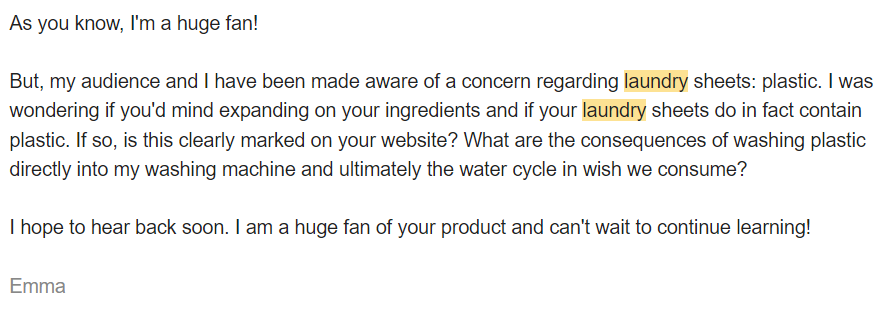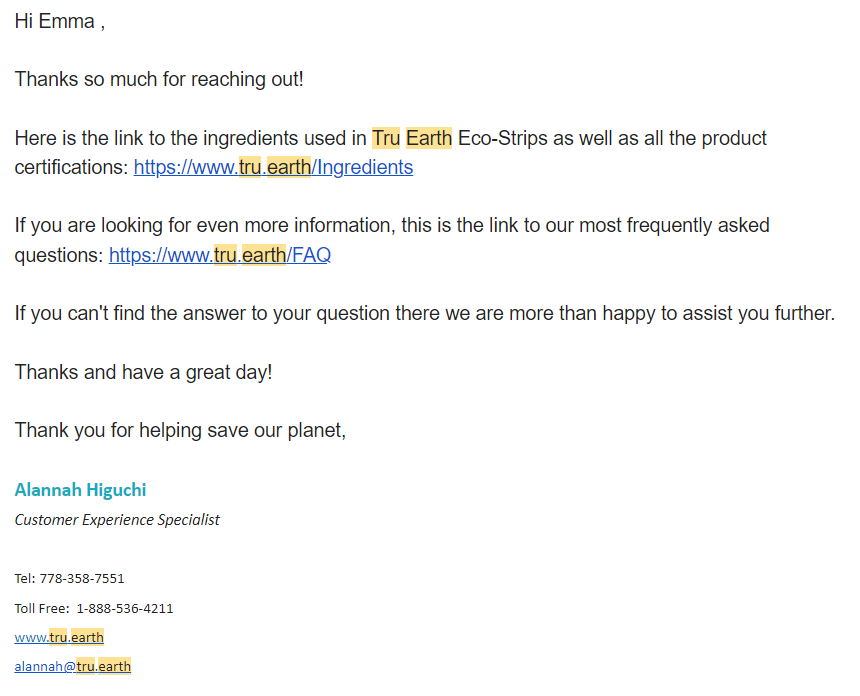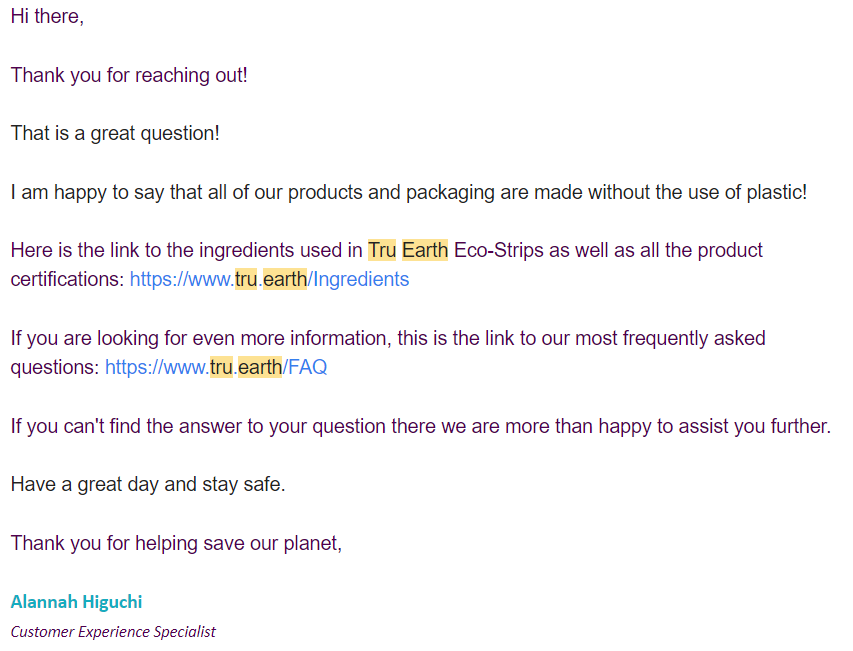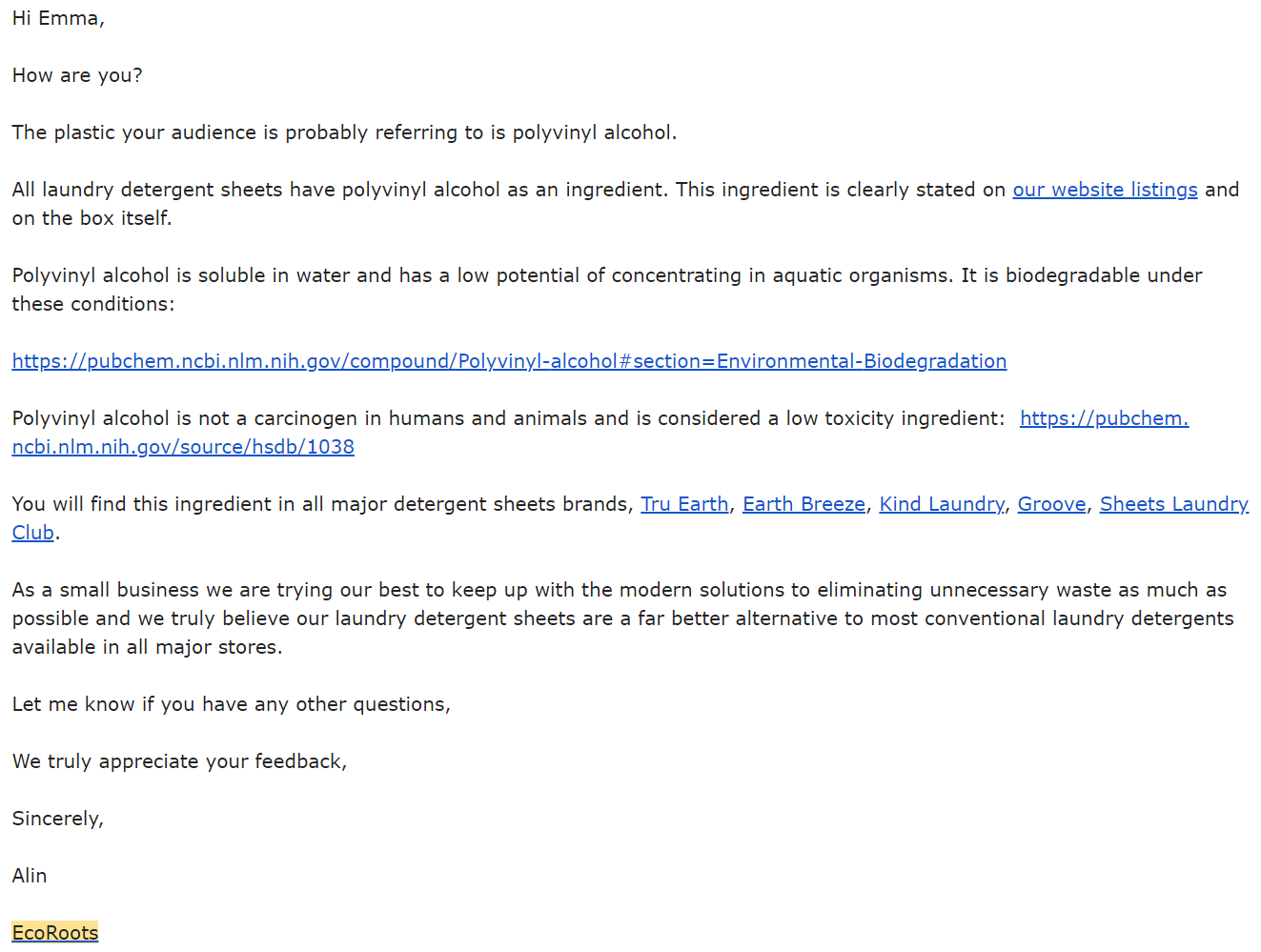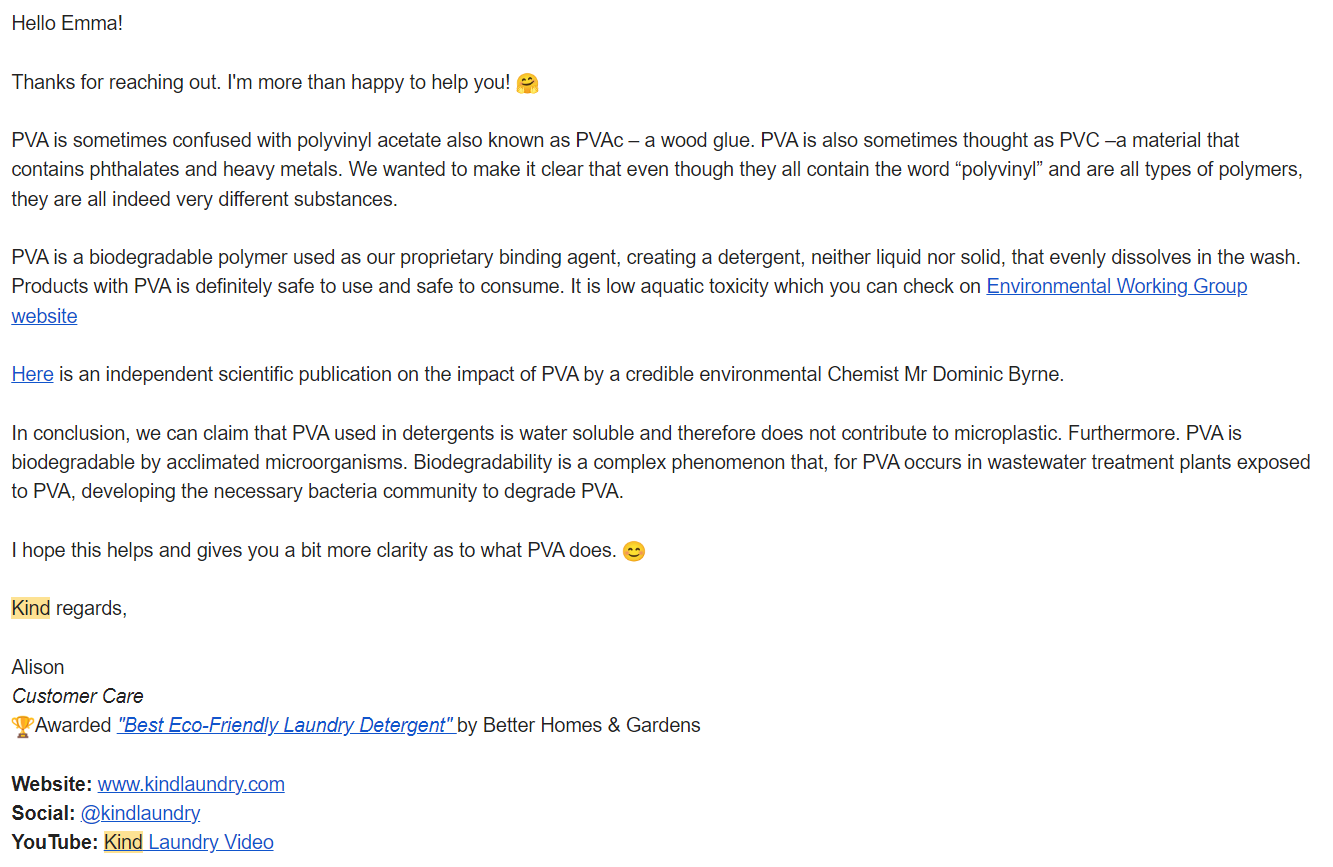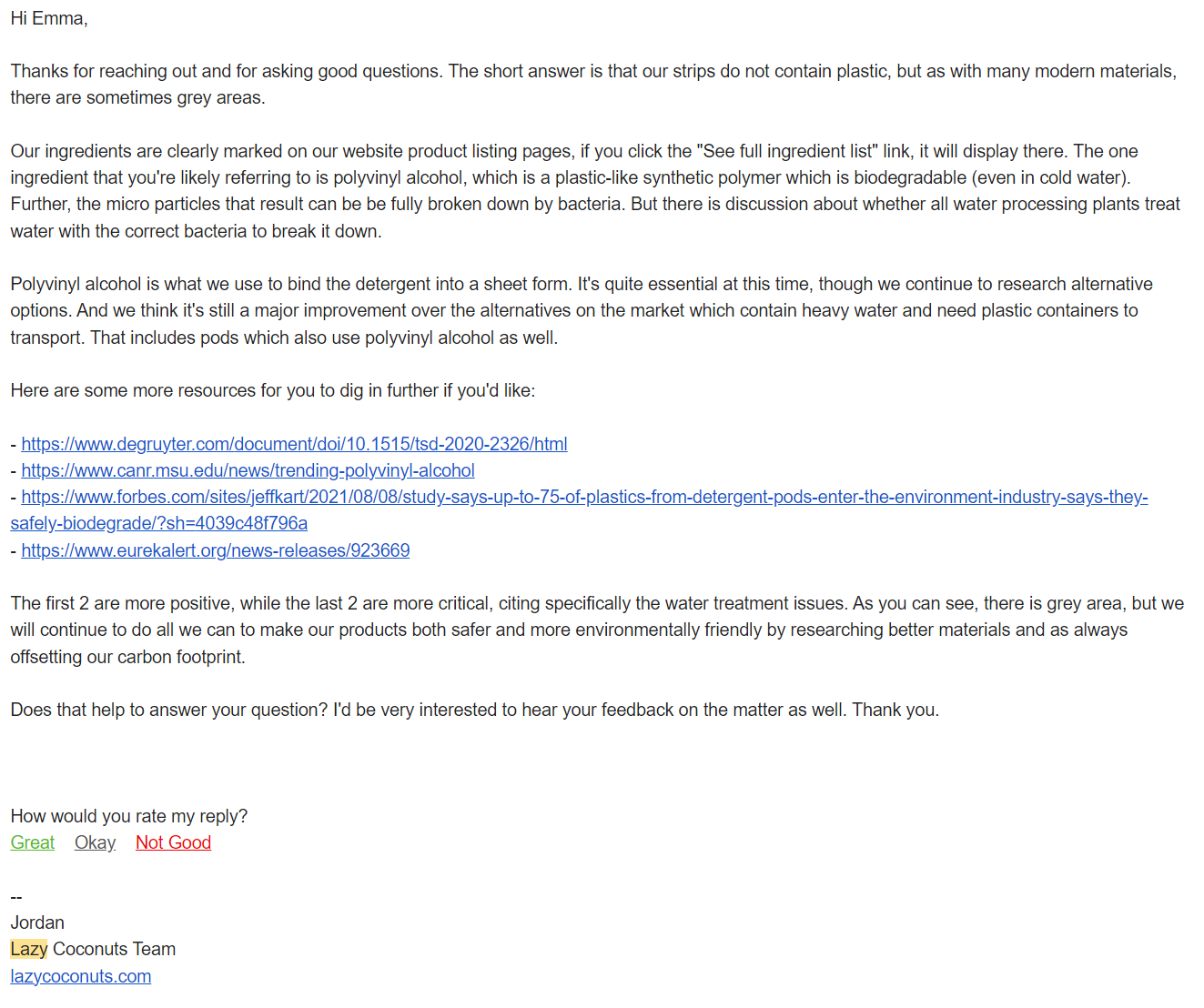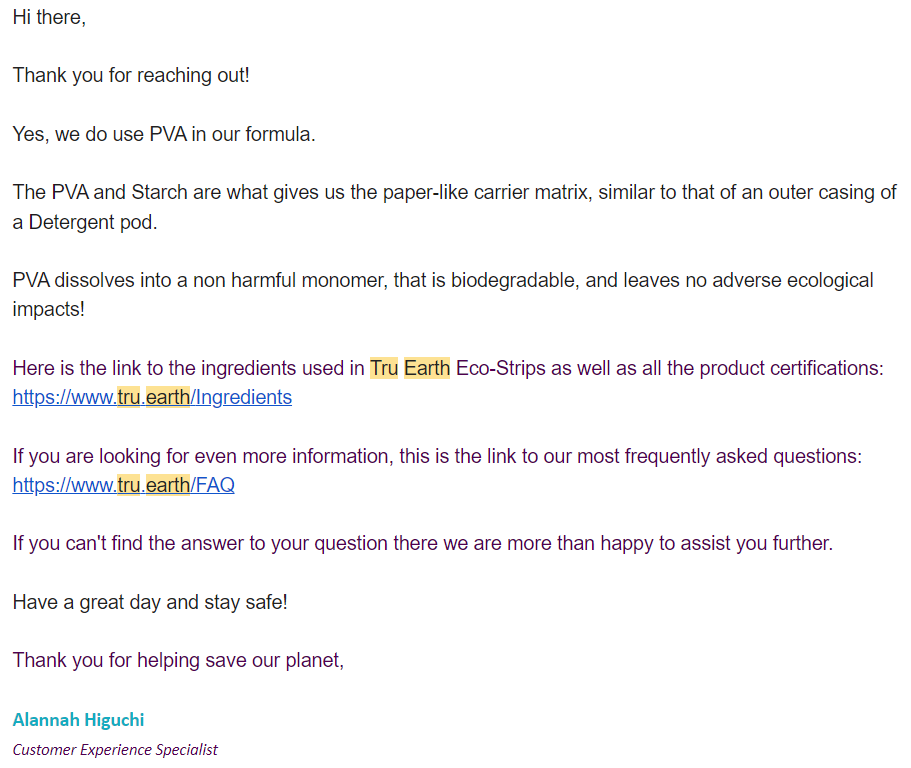The Truth about Laundry Sheets…they contain plastic
Laundry sheets. We’ve all heard of them and many of us have used them. They’ve been a favorite swap of mine for years. Until recently when it was brought to my attention that a common (most say it’s also necessary) ingredient called Polyvinyl Alcohol, or PVA, is actually plastic. What?? Eco-friendly laundry detergents with plastic in them? Yes.
Let’s dive in and discuss what is PVA, whether is it harming the environment, and what responses are from these brands.
I reached out to every brand I have worked with in the past that sells laundry sheets. I asked them all a blanket question about do their products contain plastic, what they understand the effects of PVA to be, and the future of their products. Here is what they had to say:
As we can see, most brands are very open about it and admit to their being a gray area in the PVA discussion. But, some brands weren’t. For example, TruEarth seemed to just avoid my question, not expand on PVA, and not talk about potential harm from their products. Even when I asked about PVA being plastic (which it IS), they denied it:
So, then it was time to do my own research and form my own conclusions. Thankfully, many of these brands provided great research tools for me to start out with.
Is PVA Plastic?
PVA is a water-soluble synthetic polymer. It’s in things from glue to medications to laundry pods/sheets to food packaging. It is approved by the FDA for cleaning uses and food packaging and as we just saw, even for pharmaceuticals. It has been determined to be safe for human use and consumption with daily exposure. Here is a great study full of science and facts if you’re into that, but it’s pretty dry and hard to comprehend, so I’m going to break it down in plain terms. You can also read this full study which seems to be behind a paywall…
Anyway, I asked the internet: is PVA plastic? Yes, but also no. It has the prefix poly- which many associates with things like polyester, polyethylene, and so forth which can be interpreted that PVA is in the same family meaning it is plastic. Yes, it’s synthetically derived, and many sources (from other eco brands) stating that it is plastic do not have their sources linked. But, according to the definition of plastic (a wide range of synthetic materials that use polymers as the main ingredient) then it is technically considered plastic. Which is fine, but why are these brands like Blueland and Etee, and Melioria calling it plastic without citing a source? It just seems weird to me is all.
How does PVA break down?
We already touched on it a little bit, but PVA is biodegradable. Now, technically, anything is biodegradable if you give it enough time. A plastic bottle will biodegrade but will take centuries if not millennia. How long does it take PVA to break down?
PVA is broken down by microbes. But, the caveat, these microbes are not always available. Though, this study by the British Plastics Federation (which is probably biased now that I look at it) has found that if PVAs are introduced to any of the 55 organisms that can break it down, it just breaks down into carbon dioxide and water. These organisms are found in most municipal wastewater treatment centers. But will it biodegrade naturally? Surely it will eventually. Just like a plastic bag that is exposed to the desert sun here in Vegas eventually breaks into billions of tiny pieces that are unseen by the naked eye.
I see this a lot with biodegradable plastics: they are made from petroleum, microorganisms are added, and it biodegrades faster. This doesn’t necessarily mean it’s good. It really all comes down to are these microorganisms consuming the entirety of the PVA.
What does biodegradability mean?
The straight definition means that it is capable of being decomposed by bacteria or other living organisms. Which, PVA meets that definition.
It’s not new
PVAs have existed for 100 years (learn more about the history of plastic here). But that doesn’t mean we should keep using it. The argument that Earth Breeze makes is basically this one: other companies are worse and PVAs have been used for 100 years so what’s the problem? Take smoking for example. We were a society that largely encouraged smoking for young people, for sick people, and for pregnant people. But now? Now we know better. It’s important to learn and adapt to what we learn and make our existence on this planet a better one for ourselves, animals, and plants.
The environmental impact
This study by De Gruyter states that while it is likely that such materials may persist in the environment, during their study, they found little to no traces of PVA. And, again, as this study by Michigan State University states, if the microbes are available to break it down completely, there are no harmful effects of PVA.
Though, this article from Forbes (I know, not the best source, but stick with me, though), mentions that our current sewage system is meant to deal with human waste, not PVA. Granted, I’m not sure how true this is since we’ve already learned that PVAs have been in common use for 100 years across all industries. Especially with the rise of laundry and dishwasher pods in the last few decades, you’d think that they would be better equipped to deal with PVAs. So, is my sewage system able to break down PVAs? It’s hard to say. We could all call our water treatment facilities and ask, I suppose, but there really is no way to know for each separate site.
EurekAlert makes a great point: just because something is water-soluble does not mean it will biodegrade. They are two different things. While our pods and sheets may be dissolving, they still release ethylene which is a petroleum-based chemical. Not to mention, they are such small particles that they cannot be captured with filters, they go right through.
These brands can claim biodegradability because it’s true. They CAN biodegrade…*fine print* under certain circumstances. They are tested under these conditions, but these conditions are not practical to use.
Conclusion
It’s tricky, it’s nuanced, and it’s gray. Simply put, I don’t think I can be persuaded either way unless I know the conditions for my water treatment plant. I think they are a better option than commercial brands. But I think they should continue to strive for better. Perhaps in the future, we can make PVA out of plant matter just like we do for bioplastic dog poop bags and sponges. Perhaps we can add these microorganisms to our water treatment plants.
But I don’t think pods and sheets are going anywhere. They are convenient, they weigh less, they are disabled-friendly, they don’t make a mess, and they take up less space. I think they are a great invention that still needs work.
Will I buy them in the future? Likely not unless there is more hard evidence to prove that when I personally use them, they are not causing environmental harm.
Other options include liquid natural detergents like Dirty Labs, powder laundry detergents like Molly’s Suds, or soap nuts which are plants and can actually biodegrade fully with no caveats.
Let me know your thoughts down below. I know it’s a complicated topic and more research still needs to be done. If you’re a scientist and you know way more about this, please educate us below.
As always remember that you small actions make a big impact in the long run
Emma :)
